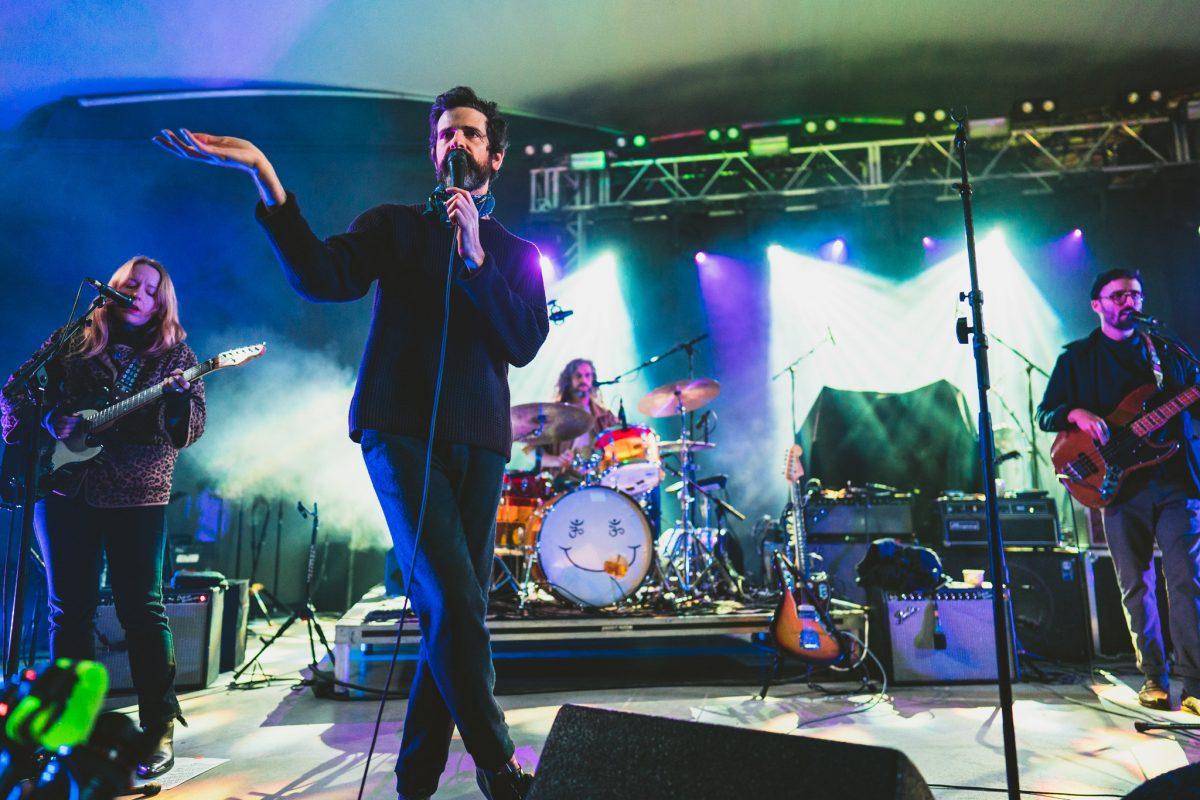Story by Adam Hamze and Mia Uhunmwuangho
In times of crisis, people cling to the things they love in order to survive. Having a passion is like having a heartbeat — it can be the difference between life and death. When Nasir bin Olu Dara Jones, more commonly known as Nas, first picked up an instrument at age 4, it was the beginning of a musical career that would reshape the face of hip-hop.
In 1994, Nas released his debut album, “Illmatic,” long hailed as one of the greatest hip-hop albums of all time. Twenty years, 11 albums and millions of dollars later, the documentary “Time is Illmatic” is playing in select theaters nationwide, including a stop at the Alamo Drafthouse on Oct. 2. The documentary gives fans a behind-the-scenes look at the making of the rapper’s timeless work.
Growing up in the projects of Queensbridge, New York, Nas was surrounded by drugs, alcohol and violence, but music and African culture also played a crucial role in his life. Nas’ father, Olu Dara, was a popular jazz musician and first exposed him to various types of music. In ninth grade, Nas dropped out because he felt that the school system suppressed his ambition. His father supported his decision.
Nas was expected to follow the stereotype. Trapped in a dangerous neighborhood and doomed to be a walking statistic, it seemed like he already had his path laid out. Instead, he discovered music, the fork in the road that led to greatness.
When Nas’s best friend, William “Ill Will” Graham, was murdered, the young rapper was faced with the decision of succumbing to the same violence that stole Graham’s life or preserving his legacy through music. He chose the latter, and “Illmatic” was born. “It’s me fulfilling a dream that we all had,” Nas says in the documentary. “It made me feel like I’m here to serve a purpose now, to just represent for him.”
Nas has influenced artists and fans around the globe. For Austin-based poet Tro’juan Henderson, Nas has lifted him up. Henderson says that throughout his childhood, he gravitated toward the mainstream elites of southern rap like Lil’ Wayne and Slim Thug, but that all changed when he discovered Nas and realized the true depth that rap music could have. “What Nas does, that I think many artists don’t do, is paint a real vivid picture, while so many other artists glorify negativity just for the sake of entertainment,” Henderson says.
Nas’ vivid imagery did more than paint pictures — it helped mold Henderson into who he is today. He says “Illmatic” offered him mental stability while he watched his friends and family members, including his 22-year-old cousin who is a convicted felon, fall victim to drugs and incarceration as a means of proving their masculinity.
This could’ve been Henderson’s fate if Nas’ music had not intervened. “Hip-hop has this kind of macho man culture where it’s not cool to be weak. There’s not many MCs who are able to be honest, who are able to be vulnerable,” Henderson says. “But Nas can make music and I say, ‘I hurt, I cried, I laughed.’ He taught me to mature. I gained this sense of emotional literacy.”
Henderson was raised in a Dallas neighborhood called “Oak Cliff,” and later met fellow rapper Tommy Simpson. Also known as So So Topic, his music is heavily impacted by Nas, as well. Simpson’s rap career skyrocketed after he opened for Erykah Badu, Talib Kweli and Mos Def at the House of Blues in Dallas. He says poverty made his upbringing difficult, but hip-hop’s positivity helped him grow and persevere.
Simpson believes the education system failed him and many other students by not teaching them important skills for survival. He first began rapping at 14 years old, and the first track he released was inspired by Nas’ “The World is Yours.” Simpson says the documentary was a reminder that he is not alone in his struggles. “Nas wrote his first album at 21, so I know I’m on the right track,” he says. “That’s really all I have, that small confirmation.”
Nas’ rise from ordinary kid to rap icon gave Simpson the motivation he needed to find success through the power of words, instead of dangerous activities. “It has a pretty powerful effect to see someone make it out through raw skill, ambition and drive,” he says. “If I put a lot of focus into my influence, in the form of positivity, I can travel the word saying good things over nice beats. That’s a revolutionary thought. It was like finding hip-hop Jesus.”
At the end of “Time is Illmatic,” Nas looks at a picture that was taken during his photoshoot after getting signed with Columbia records. He names each person that was a part of his crew, and explains how today, many of them are either dead or in jail. It highlights the fact that escaping these situations was a blessing for Nas. “I’m trying to bring light to the darkness,” he says in the documentary.
A spark of motivation is often the only thing keeping artists from collapsing. Nas provided a spark for millions worldwide, who have gone on to inspire a whole new wave of musicians. Twenty years later, Nas’ debut is still a classic, ensuring his place in the pantheon of hip-hop greats.
Catch Nas at Fun Fun Fun Fest on Saturday, Nov. 8 at 7:15 p.m. on the Blue Stage.
















































